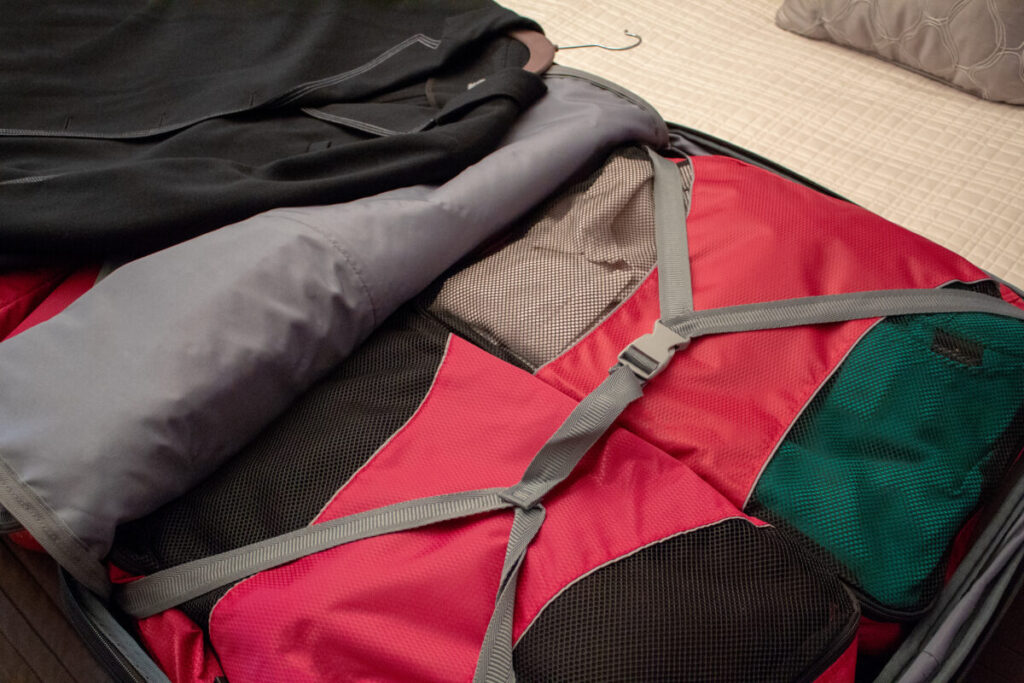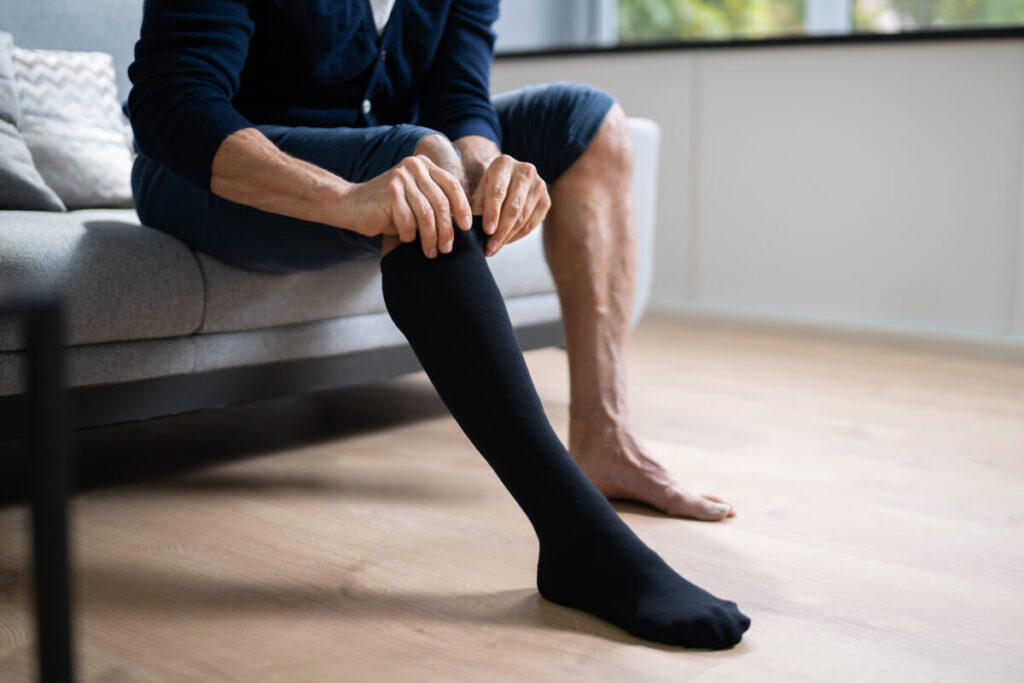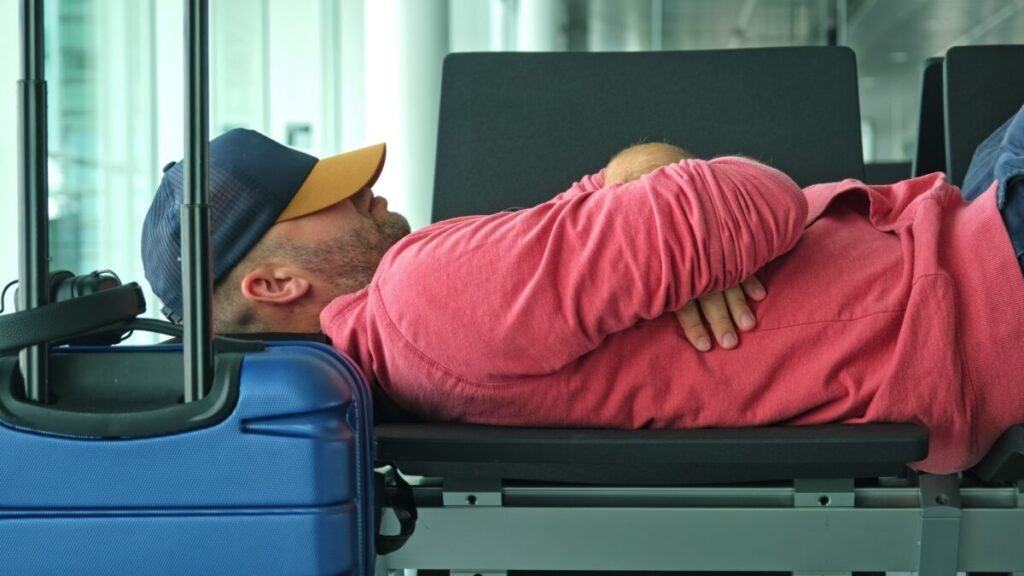Tired of the same old travel routine? Get ready to shake things up with insider secrets from the pros who know air travel best – flight attendants! These sky-high experts have all kinds of clever tricks to make your next trip smoother, cheaper, and way more enjoyable.
Flight attendants know how to score free upgrades, pack like pros, and easily breeze through security. Their hacks can save you time, money, and hassle at every journey step. From rolling clothes to maximizing suitcase space to nabbing the best seats without paying extra, these tips will transform how you fly.
Want to feel like a VIP without the price tag? Flight attendants have the scoop on snagging surprise perks and freebies, too.
Get ready to travel smarter and have more fun doing it. These game-changing hacks are about to become your new travel BFFs.
Flight Attendant-Approved Travel Hacks for Stress-Free Journeys
1. Use Packing Cubes to Maximize Space

Packing cubes is a game-changer for organizing your suitcase. You’ll wonder how you ever traveled without them! These handy fabric containers come in different sizes to fit all your clothes and gear.
Here’s why packing cubes rock:
- Keep clothes neatly rolled or folded
- Separate outfits by day or type
- Compress bulky items to save space
- Make unpacking a breeze
Try rolling your clothes instead of folding them to use packing cubes like a pro. This technique saves tons of space. Stuff socks and underwear into shoes to use every inch.
You can even use packing cubes in your carry-on. Put toiletries in one and electronics in another. When you get to security, just pull out the cubes you need.
Don’t forget to label your cubes. Use different colors or tags to know what’s inside at a glance. This makes finding things so much easier when living out of a suitcase.
Packing cubes aren’t just for clothes. Use them for makeup, charging cords, or snacks.
The possibilities are endless! Once you start using packing cubes, you’ll never return to a messy suitcase again.
2. Always Carry a Collapsible Water Bottle

You know that feeling when you’re parched on a long flight but don’t want to keep bugging the flight attendants for tiny cups of water? Enter the collapsible water bottle – your new travel bestie.
These nifty bottles fold small when empty, so they won’t hog space in your carry-on. Once you’re through security, fill up at a water fountain and stay hydrated all flight long.
Pro tip: Look for bottles with a clip or carabiner. You can attach it to your bag for easy access during the journey.
Some key benefits:
- Save money on overpriced airport drinks
- Reduce plastic waste from disposable bottles
- Always have water handy during delays
- Avoid dehydration on long flights
I never fly without mine anymore. It’s a game-changer, especially on those red-eye flights when the drink cart seems to disappear for hours.
Remember to empty it before going through security. Nothing ruins your travel zen-like chugging a full water bottle while holding up the line!
3. Wear Compression Socks for Long Flights

You’ve probably seen flight attendants sporting knee-high socks and wondered what’s up. Those aren’t just a fashion statement—they’re compression socks and a game-changer for long flights.
Compression socks gently squeeze your legs, helping blood flow and reducing swelling. They’re especially useful when stuck in a cramped plane seat for hours.
Here’s why you should consider packing a pair:
- Prevents blood clots
- Reduces leg swelling
- Helps with jet lag
- Improves circulation
Not all compression socks are created equal. Look for ones with graduated compression – tighter at the ankle and looser as they go up. Aim for 15-20 mmHg pressure for most people.
Put them on before you board and keep them on until you reach your destination. Your legs will thank you when you land feeling refreshed instead of puffy and achy.
Pro tip: Break in your socks before your trip. Wear them around the house to get used to the snug fit. And don’t forget to move your toes and stretch your legs during the flight, too!
Remember, compression socks aren’t just for the elderly or those with health issues. They’re a smart choice for anyone taking a long flight. Your future self will be grateful you made the investment.
See Related: Travel and Wellness: How to Rejuvenate Your Mind and Body on the Go
4. Download Offline Maps

You know that feeling when you’re in a new city and suddenly lose cell service? It’s the worst! That’s why downloading offline maps is a total game-changer for travelers.
Google Maps lets you save areas for offline use. Here’s how:
- Open Google Maps
- Search for the city or area you want
- Tap the city name at the bottom
- Select “Download”
It’s that easy! Now, you can navigate even without data. Just remember to download maps before your trip while you have good wifi.
Pro tip: Save maps for your whole itinerary. You never know when you might need them!
Another great option is the HERE WeGo app. It offers offline navigation and public transit information for over 100 countries—perfect for navigating the metro system in a new place!
Don’t forget to clear some space on your phone before downloading. Those map files can be pretty big!
With offline maps, you’ll never get lost in a new city again. Well, maybe you will – but at least it won’t be because your phone lost signal!
5. Invest in a Noise-canceling Headset

Flight noise can drive you crazy. A good noise-canceling headset is a game-changer for your travel experience. These awesome gadgets block out engine roar, crying babies, and chatty seatmates.
You’ve got options. Over-ear headphones offer the best noise cancellation. But if you prefer something smaller, noise-canceling earbuds work great, too. Apple’s AirPods Pro and Sony’s WH-1000XM5 are top picks for 2024.
Here’s why noise-canceling headphones rock:
- Better sleep on long flights
- Clearer audio for movies and music
- Less stress and fatigue from constant noise
- Easier to focus on work or reading
Don’t cheap out here. A quality pair is worth every penny. Your ears (and sanity) will thank you on your next red-eye.
Pro tip: Test different models before you buy. Comfort is key for long-haul flights; ensure they’re compatible with the in-flight entertainment system.
Remember to pack extra batteries or a charging cable. Nothing’s worse than dead headphones halfway through your trip!
6. Keep a Go-to Toiletries Bag

Flight attendants know the value of a well-packed toiletries bag. Having a dedicated bag always ready to go will save you time and stress. Stock it with travel-sized essentials you use daily.
Here’s what to include:
- Toothbrush and toothpaste
- Deodorant
- Facial cleanser
- Moisturizer
- Sunscreen
- Hair products
- Makeup basics
Pro tip: Get a clear, TSA-approved bag to breeze through security. Look for one with multiple compartments to stay organized.
Don’t forget your medication! Keep a small supply of any daily meds in your toiletry kit. Throw in some pain relievers and antacids, too.
A leave-in product can be a lifesaver for hair care. It detangles, conditions, and protects all in one. Pack travel-sized versions of your favorite shampoo and conditioner as well.
Consider getting refillable travel bottles. Fill them with your preferred products from home. This will save you money and ensure you always have your favorites.
Toss in a few extras, like lip balm, hand sanitizer, and face wipes. These are handy for freshening up mid-trip.
Update your kit regularly. Replace empty products and check expiration dates. A well-maintained toiletry bag makes packing a breeze every time you travel.
See Related: The Best Wheeled Garment Bags to Transform Your Travel Experience
7. Choose a Travel-friendly Blanket

You know that feeling when the plane’s AC hits you like an arctic blast? That’s where a good travel blanket comes in clutch. But not just any old blanket will do.
Look for something lightweight and compact. You don’t want to lug around a bulky comforter. Opt for materials like fleece or microfiber that pack down small but keep you toasty.
Size matters, too. A too-small blanket leaves your feet freezing, while one too big becomes a tangled mess. Aim for something that covers you from chin to toe without excess fabric.
Here’s a quick checklist for your perfect travel blanket:
- Lightweight (under 1 pound)
- Compact (should fit in a small carry-on pocket)
- Soft and cozy material
- Machine washable (planes are germy!)
- Comes with a storage pouch
Pro tip: Look for a blanket with a foot pocket. It’ll keep your toes warm and stop the blanket from slipping off while you snooze.
Remember, your travel blanket might double as a pillow or lumbar support. So, choose one versatile enough to meet all your comfort needs at 30,000 feet.
8. Know How to Manage Jet Lag

Jet lag can be a real pain when traveling across time zones. But don’t worry, there are ways to fight it! Flight attendants have some tricks up their sleeves that you can use, too.
First things first, adjust your sleep schedule before you leave. Try going to bed earlier or later, depending on where you’re headed. This can help your body get ready for the time change.
During your flight, drink lots of water and skip the booze. Alcohol might make you sleepy, but it can mess with your sleep cycle later. Stick to water to stay hydrated and feel better when you land.
Here are some quick tips to beat jet lag:
- Get some sunlight when you arrive
- Take short naps (20-30 minutes max)
- Eat meals at local times
- Use lavender essential oil to help you sleep
- Try melatonin supplements (ask your doctor first)
When you reach your destination, stay awake until the local bedtime. It might be tough, but it’ll help you adjust faster. If you must nap, keep it short so you can sleep at night.
Remember, everyone’s different. What works for one person might not work for you. Don’t be afraid to experiment and find what helps you feel best when traveling.
9. Use Sleep Aids Responsibly

Getting shut-eye on a plane can be tricky. Some folks turn to sleep aids for help. But you gotta be careful with these.
Over-the-counter options like melatonin might work for you. Just check with your doctor first. They can tell you if it’s safe and how much to take.
Prescription sleep meds are stronger. Only use them if your doctor says it’s okay, and follow the instructions to a T.
Here are some tips for using sleep aids on flights:
- Take them at the right time (usually 30 minutes before you want to sleep)
- Don’t mix with booze
- Bring only what you need for the trip
- Keep meds in your carry-on, not checked bags
Remember, sleep aids can make you groggy. That’s no fun if you gotta hit the ground running at your destination.
Natural alternatives might also be worth a shot. Chamomile tea or lavender essential oil could help you relax without the side effects.
Bottom line: Sleep aids can be handy for long flights. But use ’em wisely and safely. Your health comes first, even at 30,000 feet!
See Related: Travel Hacks Every Frequent Flyer Should Know
10. Bring an Emergency Snack

You never know when hunger might strike on a long flight. Packing a small snack can be a lifesaver when you’re stuck on the tarmac or facing delays. Choose something that won’t spoil easily and won’t make a mess.
Here are some good options to tuck in your carry-on:
Avoid anything too smelly or messy. Your seatmates will thank you! Remember to check customs rules if you’re flying internationally. Some countries restrict the import of certain foods.
Pro tip: Pack your snack in a clear, resealable bag. This makes it easy to access and keeps things neat in your bag. It also helps when going through security screening.
Don’t rely solely on airplane food. Flights can run out of meal options, especially on long-haul routes. Having your own snack gives you a backup plan if you get hungry between meal services.
Be sure to stay hydrated, too. Bring an empty water bottle to fill up after security. Snacking can make you thirsty at altitude!
